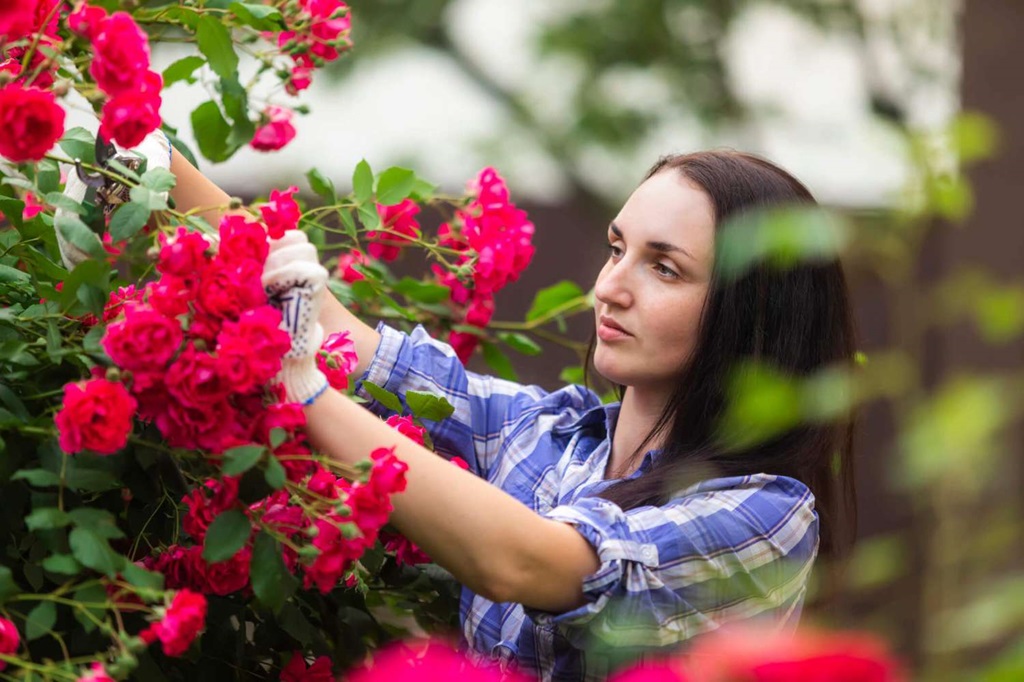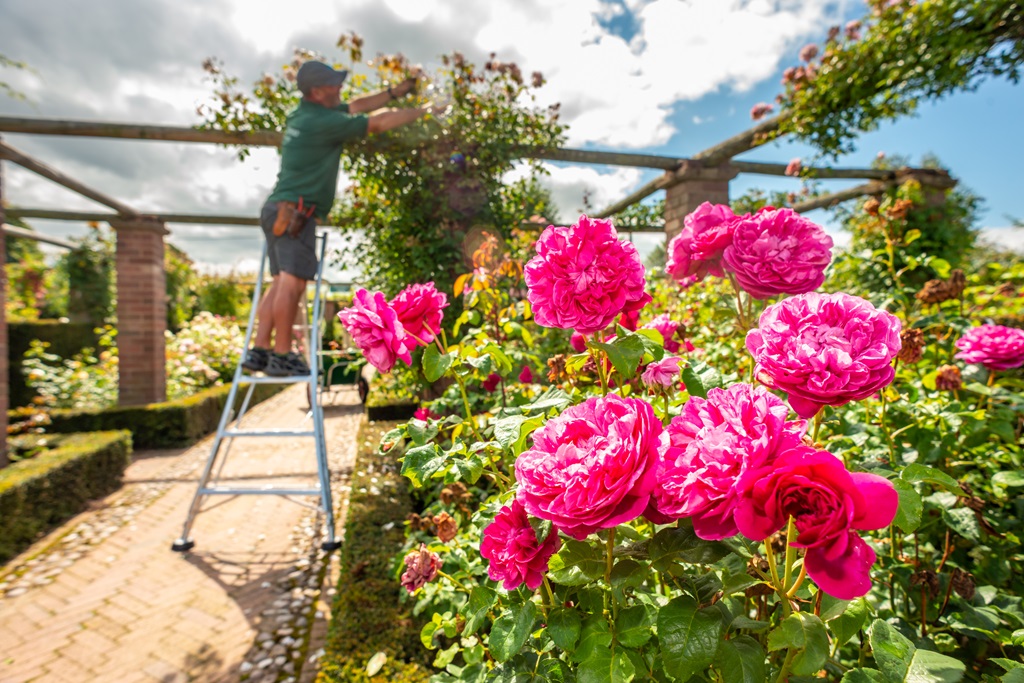When is It Too Late to Prune Roses?

Pruning roses can seem daunting to new gardeners. When is it too late to prune roses? And is there ever a point when it’s too late to prune your roses? As an avid rose gardener, I’ve learned that while there are optimal times for pruning, it’s rarely too late. With some care and finesse, roses can be pruned and get back on track at various points in the growing season.
Why Pruning is Important for Roses
Before jumping into when to prune, it helps to understand why pruning is so crucial for rose health.
Roses are remarkably resilient, but they need pruning to stay strong. Here’s why:
Promotes New Growth
Pruning removes old wood and stimulates the plant to push out new canes. This new growth will lead to more profuse blooming. Without pruning, roses would grow woody and produce fewer flowers.
Improves Air Circulation
Removing congested, crossing, and inward-facing branches opens the plant’s center for better air circulation. Good airflow decreases pest and disease problems.
Shapes the Plant
Pruning controls the size and shape of the plant. You can prune roses to be bushes, hedges, climbing vines, or any form you desire.
Maximize Flower Production
Roses bloom most prolifically on younger canes. Pruning encourages an abundance of new canes, which in turn maximizes blooms.
Renews Aging Plants
Old, neglected roses can be rejuvenated through correct renewal pruning. This gives overgrown plants a fresh start.
Makes Roses Easier to Care For
A well-groomed rose is more straightforward to care for. Pruning out problem branches improves access for spraying, feeding, and deadheading spent blooms.
In summary, pruning promotes rose health, vigor, form, and floral display. It’s an indispensable task for any rose gardener.
When is the Best Time to Prune Roses?
Pruning requirements differ slightly among the various rose classes, but roses are generally pruned in late winter or early spring. Here are some guidelines:
Bush and Shrub Roses
These are pruned in late winter or early spring before new growth begins. Cuts are made just above outward-facing buds. Old, dead, and crossing branches are removed. The overall size is reduced by 1/3 to shape the plant.
Ideal pruning time: Late February to mid-March. Prune as soon as the worst of winter has passed but before new spring growth emerges.
Climbing Roses
Also, prune in late winter/early spring. Remove dead or damaged wood, then tie in the remaining healthy canes. Cut back overly long lateral shoots and reduce crown congestion.
Ideal pruning time: Like bush roses – late winter or early spring before growth resumes.
Old Garden Roses
Types like Gallicas, Albas, Damasks, Centifolias, and Mosses bloom on two-year-old wood, so prune judiciously to avoid removing potential flowering stems. After blooming, shape lightly by cutting the oldest canes to the ground.
Ideal pruning time: Within 4-6 weeks after the main flush of spring/summer blooms.
Repeat-Blooming Roses
These bloom on new wood, so prune in early spring before growth starts. Cut out dead and crossing branches, reduce size by up to 1/3, and shape.
Ideal pruning time: Late winter or very early spring before buds break.
Tree Roses
Treat these as you would a shrub rose. Prune to shape the “head” and stimulate new growth. Remove dead, damaged, or crossing branches. Cut back branches by 1/3.
Ideal pruning time: Late winter or early spring before growth resumes.
Pruning Guidelines By Region
The exact pruning time can vary slightly depending on your USDA Hardiness Zone or general region:
Zones 2-5
Prune 6-8 weeks before the average last frost date in spring.
Zones 6-7
Prune 4-6 weeks before the average last frost.
Zones 8-10
Prune 2-4 weeks before the last expected frost.
Zone 11+ (South and West Coast)
Prune in mid to late January.
The key is pruning before new growth begins in your area, as growth starts earlier in warmer regions. Prune as soon as winter starts transitioning to spring.
Is it Ever Too Late to Prune Roses?
Ideally, roses should be pruned in late winter or very early spring. But life happens, and you may miss that window from time to time.
The excellent news is roses are very forgiving, so it’s rarely ever truly too late to prune. Here are some tips if you missed the optimal pruning time:
Prune Immediately After Blooming
If you didn’t get roses pruned in early spring, the next best time is right after their first flush of bloom. Blooming naturally inhibits new growth as the plant focuses energy on flowers. Pruning immediately after blooming directs energy back into new cane production. It interrupts the plant’s natural cycle, but roses recover quickly.
Prune lightly Mid-Season
Don’t be shy about pruning roses mid-season if needed for shaping, deadheading, or to open up congested branches. Light tip pruning and deadheading encourage more continuous bloom. Just avoid heavy pruning mid-summer.
Prune Moderately in Early Fall
Roses can be pruned moderately in early autumn (late September to October). This is often called the “second spring,” as it stimulates fresh fall growth. Never prune severely this late, or you risk winter damage to freshly exposed canes. But a moderate pruning is fine.
Prune Very Lightly in Winter
If needed, roses can be pruned lightly over winter. This carries some risk of winter dieback on freshly cut canes, so make only the most necessary cuts for shaping. Then, do a full corrective prune in early spring.
The only time I’d caution against pruning roses is during a hard freeze or deep in winter from December to February. Otherwise, prune as needed throughout the seasons – just be cautious with severity in fall and winter. Roses are very forgiving!
Pruning Neglected, Overgrown Roses
Sometimes, rosebushes fall by the wayside and get overgrown. Here’s how to renovate them through corrective pruning:
1. Start in Early Spring
Prune neglected roses in early spring as soon as weather permits. The fresh growth stimulated by pruning will mature throughout the growing season before winter.
2. Remove All Dead Wood
First, cut out all dead, damaged, and diseased wood. This will leave you with only healthy stems to work with.
3. Select 3-5 Best Canes
Choose 3-5 of the healthiest, most outward-facing canes to form the plant’s framework. Remove all other old canes to the ground.
4. Cut Back the Selected Canes
Prune down the selected canes by 50-75% of their height. This stimulates utterly new growth.
5. Shape the New Framework
As the new canes grow over the season, train them into an attractive, productive shape. Maintain this young framework with annual pruning.
6. Provide Extra Care
The rejuvenated plant needs extra water, nutrients, and TLC over the first year. But it will reward you with vigorously renewed growth and flowers.
While roses can bounce back from neglect, it’s always best to prune them annually. But remember, they are resilient and respond well to corrective pruning at almost any time!
Signs It’s Too Late to Prune Roses
Pruning at the wrong time can damage roses, but that point is very late. Here are a few signs you’ve genuinely missed the window:
- Pruning during a hard freeze – This can kill newly exposed canes. Avoid pruning if they are freezing.
- Pruning after a growth flush in fall – Pruning after autumn growth ceases risks of dieback over winter. Stick to light maintenance pruning.
- During deep winter – Heavy pruning in mid-late winter exposes canes to cold injury before spring growth resumes.
- Pruning when buds are swelling – Pruning later than 2-4 weeks before spring growth starts risks removing this season’s flower buds.
Aside from those cases, it’s never too late for light pruning and deadheading. Roses are forgiving! Just avoid heavy pruning outside of early spring.
Conclusion
While roses thrive best with annual pruning in early spring, they can be pruned at almost any time of year with care. The only times to avoid pruning are during freezing weather or after fall growth has halted. Aside from that, feel free to do maintenance pruning as needed through the seasons. Roses are resilient, so don’t be afraid to prune them if you miss the ideal window. Just use care in fall and winter. With their forgiving nature, it’s rarely ever truly too late to prune your roses and get them thriving again.
Common Questions
1. Should you prune roses in summer?
Roses should not be pruned heavily in summer, as this can stress them during hot weather. However, light tip pruning, deadheading, and shaping are fine in moderation during summer.
2. How often should you prune roses?
Most roses should be pruned once yearly. Prune in late winter or very early spring before new growth emerges. The only exceptions are some Old Garden Roses that bloom on two-year-old wood – these only need light pruning just after flowering.
3. Can you prune roses too much?
Yes, you can over-prune roses. Generally, avoid removing more than 1/3 of the plant’s overall size when pruning. Cutting back further can stunt roses and reduce flowering. Make conservative cuts, then see how the plant responds.
4. What’s the best tool for pruning roses?
Bypass pruning shears are ideal for most rose pruning. Select high-quality pruners that make clean, smooth cuts. Long-handled loppers help reach inner branches and curve-tip thornstripper pruners easily cut through thorny old stems.
5. Do you need to disinfect pruners between roses?
Yes, it’s a good idea to disinfect your pruners after each plant to prevent spreading disease. Dip the blades in isopropyl alcohol or a 1:10 bleach solution for 30 seconds between plants. A quick cleaning helps keep roses healthy.



